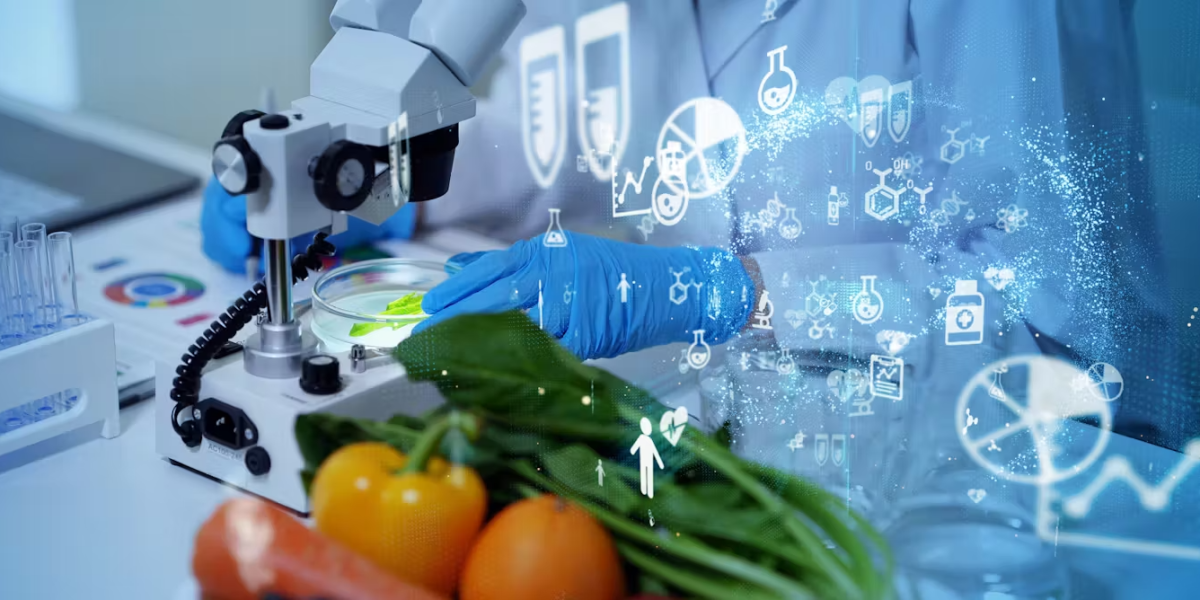Never before has the impact of diet on human health been so studied as it is now. In a world where rates of chronic diseases such as obesity, cancer, diabetes and cardiovascular diseases continue to increasethe relationship between diet and our well-being is, without a doubt, a central topic.
In this context, food chemistry is presented as a crucial field of knowledge.
From pasteurization to the present day
The food chemistry It is a branch of chemistry that focuses on the study of the composition, sensory properties, transformation and safety of what we eat, as well as its effect on the organism at a molecular level.
Its birth dates back to the second half of the 19th century and, since then, its contributions have been (and are) of incalculable value. Probably one of the first and best known is the pasteurizationprocess by which a food is heated for a time to then be cooled quickly, so that pathogenic microorganisms are eliminated without altering the properties of the food. Was Louis Pasteur who developed it in 1850, driven by the need to solve problems related to the deterioration of certain products (wine, beer or milk) in the food industry.
After almost two centuries of life, food chemistry has evolved rapidly, coming to integrate new technologies and computational methodologies in recent years. Among these, two are worth highlighting: cheminformatics (applied to food) and artificial intelligence (AI).
You’ve probably heard of the second because it’s in the news almost every day, but the first may not be as familiar to you. The cheminformatics is a discipline that combines chemistry, data science and computer science to store, model and predict large amounts of chemical information to generate knowledge.
The application of AI and cheminformatics techniques to food chemistry It is greatly accelerating the development of this science in all its aspects, including the understanding and prediction of the effect of food on health. This development has been facilitated by the emergence of freely accessible databases with chemical and biological information on food chemical compounds.
This is how AI helps preserve avocados or detect pathogenic fungi
All these large amounts of data have made it possible to train AI models capable of solve tasks related areas such as food preservation, the detection of contaminants or the prediction of the organoleptic properties of compounds, among others.
To give a few examples, AI models have recently been implemented in the preservation of products such as avocadowhere the analysis of hyperspectral images (that is, analysis of all the “colors” or frequencies of the electromagnetic spectrum in an image, pixel by pixel) using AI allows its freshness to be evaluated without manipulation.
Regarding the detection of contaminants, the algorithms known as “robotic noses” have been very useful in detecting mycotoxinsa type of pathogenic fungus that can be present in meat, fish, milk or coffee.
In the culinary field, algorithms capable of creating personalized recipes for each user. And finally, other systems have been developed to predict the degree of umami flavor of a food.
Artificial intelligence models at the service of health
In the health field, models such as HyperFoods have been designed in order to identify food molecules with possible antitumor activity. One area of great interest focuses on potential interactions between drugs and food compounds. The result of this is the development of algorithms such as FDMine either DeepDDIcapable of predicting drug-food interactions from the molecular structures of their chemical components.
It is also worth highlighting the work of researchers who, using cheminformatics techniques, examined the capacity of certain food compounds, such as polyphenols, coumarins and polyamines (present in fruits and vegetables), to inhibit SARS-CoV-2 protease during the covid-19 pandemic.
A field to explore
From the Biostatistics and Bioinformatics Unit At IMDEA Food, we focus our efforts on combining AI and cheminformatics to understand the mechanism of action of food compounds on health at a molecular level.
The identification of all the interactions of these substances with human proteins and the microbiota allows us to get closer to the effect that any food product produces on human health. Still few interactions are known; Hence, we are committed to using cheminformatics and AI to guide experimentation and accelerate the understanding of the mode of action of foods in health.
For example, we have made predictions of all compounds capable of giving false positives in biochemical assays that evaluate the interaction of food molecules with proteins. This will allow us to discern which of these interactions present in the databases are reliable and which are not. And how do we do it? Combining methods that take advantage of the structural properties of molecules together with AI tools.
In another line of work, we have proposed thousands of potential interactions between human proteins and compounds present in foodwhich have been made available to the scientific community for experimental trials. In this way, scientists can focus on these predictions, greatly reducing the resources needed.
Today, we are exploring new models of deep learninga type of AI that offers a wide range of possibilities, such as the generation of new drugs and nutraceuticals (molecules that have health benefits beyond basic nutrition, by acting preventively). With this, we hope to continue expanding the development of food chemistry in human health through the use of the most advanced computational tools.














